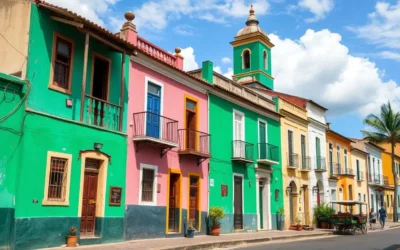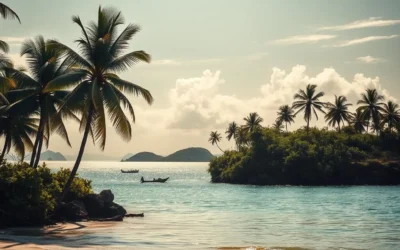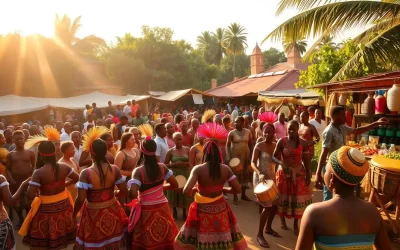You’re about to uncover one of West Africa’s most underrated destinations – a country rich in culture and natural beauty. With a population of less than 2 million people, Guinea-Bissau remains one of the least-visited nations in the region.
The capital city, with its unique blend of colonial architecture and vibrant markets, offers a fascinating glimpse into the nation’s history and cultural heritage. As a traveler, you’ll find that this gem of West Africa provides authentic experiences without the crowds, making it an ideal spot for adventure seekers.
Whether you’re exploring historic fortresses, bustling markets, or pristine island getaways, you’ll discover why this nation deserves more attention from international travelers looking for off-the-beaten-path experiences.
Discovering Guinea-Bissau’s Hidden Capital

Discover the charm of Bissau, a city that embodies the spirit of Guinea-Bissau with its unique blend of cultures and traditions. As you explore this lively capital, you’ll notice the blend of Portuguese colonial architecture and West African vibrancy that gives Bissau its unique character.
The old town, known as Bissau Velho, offers a glimpse into the city’s colonial past with its crumbling yet charming buildings, narrow streets, and historical landmarks that tell stories of a bygone era. You’ll see many colonial-era buildings while walking through the Portuguese Quarter, each with its own tale. From elegant Amilcar Cabral Avenue to the lively Fera Bandim Market, the city’s past is part of daily life.
Bissau packs a cultural punch with its mix of ethnic groups, languages, and traditions that have shaped the city’s identity over time. The city’s modest size makes it easy to explore on foot, allowing you to discover hidden corners, local eateries, and cultural spots at your own pace. As you wander through Bissau’s streets, you’ll experience the authentic, unhurried atmosphere where local life unfolds naturally.
Visiting Bissau isn’t complete without experiencing the Fera Bandim Market, where stalls line the pavement offering anything from fresh produce to unique handcrafted items. The city serves as both a historical place where you can explore Guinea-Bissau’s complex past and a gateway to adventures in the surrounding regions and islands.
Exploring the Historic Fortaleza de Sao Jose da Amura

Guinea-Bissau’s colonial past is vividly captured by the Fortaleza de Sao Jose da Amura, a 14th-century Portuguese fort. This historic place is a must-visit for anyone interested in understanding the country’s complex history.
The Fortaleza de Sao Jose da Amura was strategically built to protect colonial interests and control maritime trade, making it a crucial military installation during its time. As you explore the thick stone walls and bastions, you’ll gain insights into the relationship between Portugal and Guinea-Bissau.
A guide can enhance your visit, providing stories about past battles, colonial administration, and the fort’s role in Guinea-Bissau’s journey to independence, thus enriching your overall experience.
From the fortress walls, you can enjoy panoramic views of Bissau and the Geba River, understanding why this location was so strategically important throughout history. The Fortaleza represents one of the few well-preserved colonial structures in the country.
Immersing in Local Culture at Fera Bandim Market

Step into the Fera Bandim Market, and you’ll be surrounded by the rich tapestry of Guinea-Bissauan life. This market is a sensory delight, filled with hundreds of vendors selling everything from fresh produce to unique handcrafted items. Exploring the market’s narrow paths and booths is an adventure.
A local guide can help you navigate the crowds and avoid scams, allowing you to fully experience the local culture and life in Bissau. The Fera Bandim Market showcases the vibrant markets of West Africa, with lively bargaining, colorful textiles, and local music.
The market stands as the beating heart of Bissau, where everyday life unfolds in a vibrant tapestry of sights, sounds, and aromas that capture the essence of Guinea-Bissauan culture. As the largest market in town, Bandim Market sprawls across several blocks, creating a maze-like experience.
- Fera Bandim Market is a social hub where people gather to exchange news, share meals, and maintain community bonds.
- Navigating the narrow pathways between stalls offers an authentic glimpse into local commerce.
- The market’s food section provides an excellent opportunity to sample local delicacies and fresh produce.
- Beyond shopping, Bandim Market offers a sensory experience into local life.
By visiting the Fera Bandim Market, you’ll gain insights into daily routines and witness the art of bargaining firsthand, an essential cultural practice in Bissau.
Bissau, Guinea-Bissau: Best Things to Do – Top Picks
In Bissau, you’re not just visiting a city, you’re immersing yourself in West Africa’s hidden gem. The capital of Guinea-Bissau offers a variety of things to do, from exploring historical sites to experiencing the local culture.
Beyond the main attractions, Bissau has several other compelling things to see and do. The Old Presidential Palace, though damaged, remains an important historical site in town, illustrating the country’s political journey and architectural legacy. For those interested in local art and culture, the National Ethnographic Museum is a must-visit, housing a collection of artifacts that tell the story of Guinea-Bissau’s diverse ethnic groups.
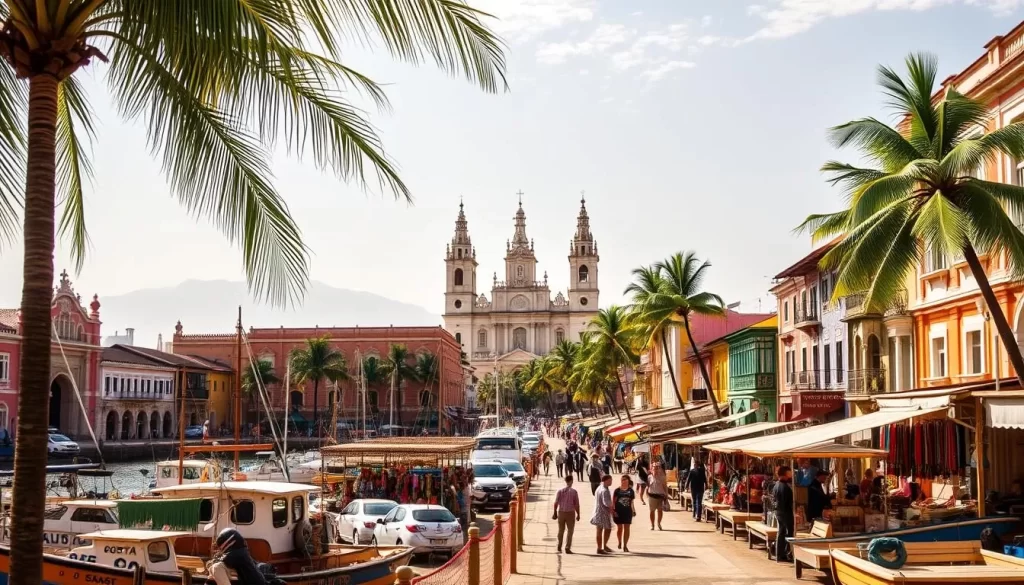
Nature enthusiasts will appreciate the proximity to mangrove forests and wetlands, where guided boat tours provide opportunities to spot diverse bird species. The city’s Portuguese influence is evident in its cuisine, with several restaurants offering a fusion of European and African flavors. Evening options include small music venues where you can experience gumbe, the country’s distinctive musical style.
Religious sites like the Bissau Cathedral reflect the country’s religious diversity, providing peaceful places for reflection. Local tour operators can arrange specialized experiences, giving you customized ways to connect with the local culture. With so many things to do, Bissau is a city that has something for everyone, making it a unique place to visit in Guinea-Bissau.
Day Trip to Bolama: The Former Colonial Capital
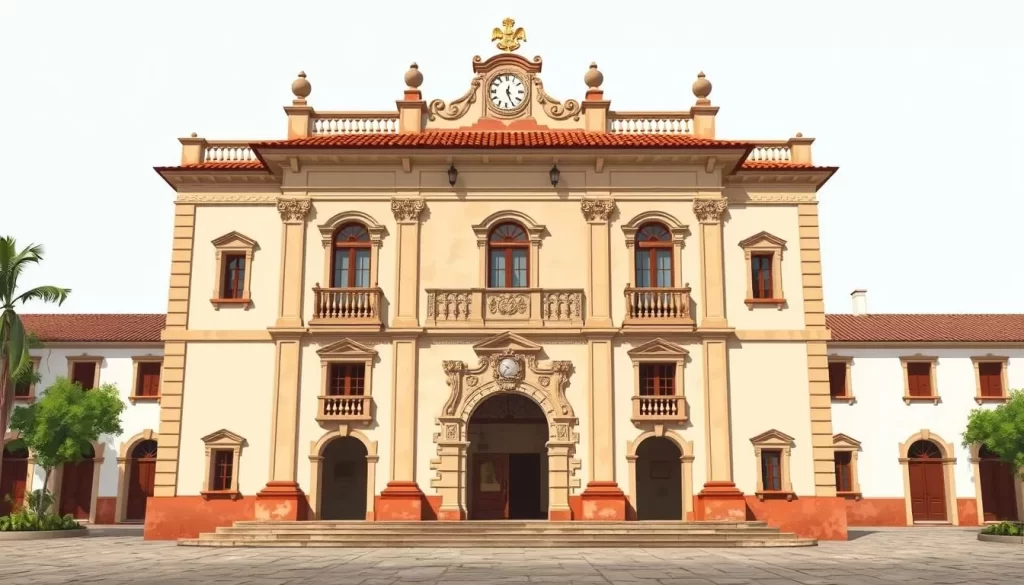
A day trip to Bolama is a step back in time, revealing the remnants of a colonial era. Nestled in the Bijagós Archipelago, Bolama was once the capital of Guinea-Bissau, becoming the center of power in 1879 before the government moved to Bissau in 1941.
The journey to Bolama, roughly 50 km from Bissau, involves multiple modes of transport due to the limited infrastructure. This challenging ride adds to the adventure, with the scenic boat ride across the archipelago offering views of mangrove forests and potential wildlife sightings.
Bolama’s historic significance is evident in its colonial architecture, particularly the Governor’s Palace, a symbol of the island’s history and former prominence. Visitors can explore its halls, imagining the past as they walk through the remnants of administrative importance.
Unlike Bissau’s bustling atmosphere, Bolama moves at a slower pace, with nature reclaiming parts of the town. This hauntingly beautiful setting is a treat for photographers and history enthusiasts, with grand boulevards and public squares standing as silent witnesses to a bygone era.
The day trip to Bolama offers a unique journey through time, exploring the country’s past amidst challenging roads and limited infrastructure. It’s an opportunity to experience a place where history is palpable, making the logistical challenges worthwhile.
Adventure to the Bijagós Archipelago
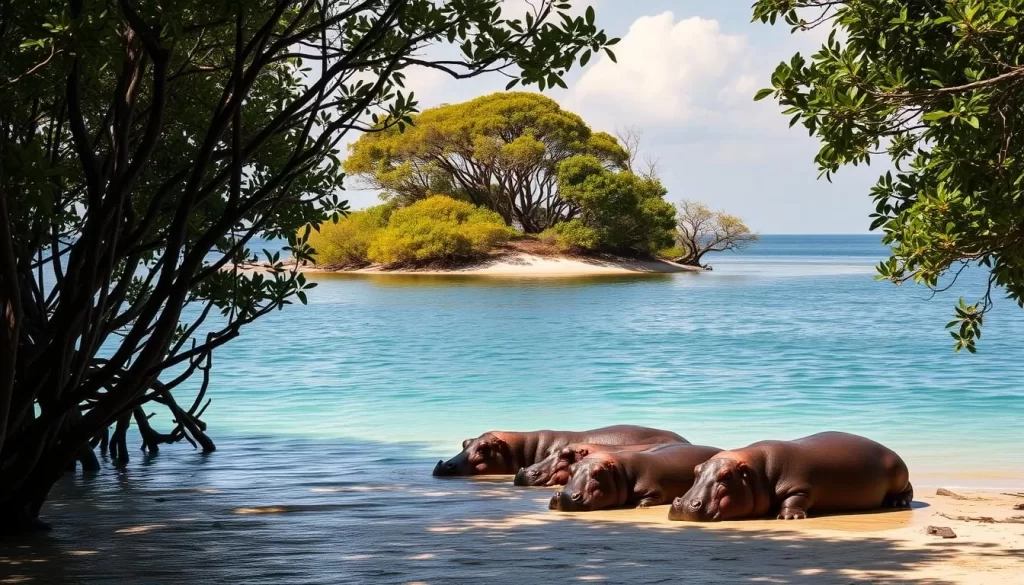
Located off the coast of Guinea-Bissau, the Bijagós Archipelago is an unparalleled adventure destination. This remote cluster of islands is mostly uninhabited, offering a pristine and untouched environment for explorers.
The archipelago is known for its unique wildlife, including the rare salt-water hippos found in Orango Island, part of the Orango Islands National Park. These hippos have adapted to the brackish waters of the mangrove forests and coastal wetlands, making it a fascinating spot for wildlife enthusiasts.
The Bijagós Archipelago is a UNESCO Biosphere Reserve, comprising 88 islands with diverse ecosystems and traditional cultures. Visitors can enjoy various adventure activities, including boat excursions through mangrove channels, fishing trips, and guided hikes through dense forests that harbor diverse bird species and primates.
With its national parks, such as Orango Islands National Park and João Vieira and Poilão Marine National Park, the archipelago protects critical habitats for endangered species. The Bijagós Archipelago offers a unique blend of natural beauty, cultural experiences, and adventure, making it a must-visit destination for travelers seeking an off-the-beaten-path experience.
Exploring Bubaque Island’s Pristine Beaches
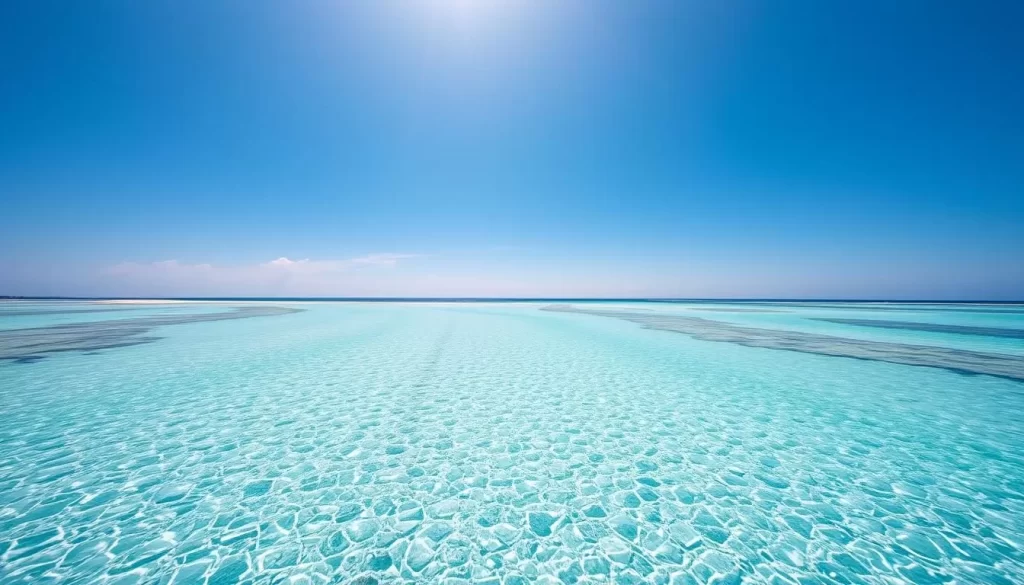
Bubaque Island, part of the Bijagós Archipelago, offers a serene beach experience unlike anywhere else in West Africa. The island is famous for its untouched beaches, where soft, golden sands stretch far and wide, inviting you to relax and unwind.
The beaches of Bubaque Island are perfect for those seeking peace or adventure. You can swim, sunbathe, or simply take a leisurely walk along the shore. Praia Bruce stands out as one of the island’s most beautiful beaches, with turquoise waters meeting golden sands.
Beyond the beaches, Bubaque Island is known for its matriarchal society, where women play a significant role in the community. You can learn about their traditions and meet the islanders, who are eager to share their culture.
The island is also a haven for wildlife lovers, with rare species such as saltwater hippopotamuses and colorful birds calling Bubaque home. The dense forests and mangrove ecosystems provide a habitat for diverse bird species and other wildlife, making it a treasure to explore.
Accommodations on the island range from simple guesthouses to more comfortable hotels like Lodge Les Dauphins, offering basic amenities while maintaining the island’s authentic character.
Conclusion: Making the Most of Your Visit to Bissau
As you reflect on your time in Guinea-Bissau, it becomes clear that this country offers a unique travel experience, one that combines history, culture, and natural beauty in a way that’s hard to find elsewhere. Your journey through Bissau, the capital, would have introduced you to the country’s rich colonial history, while excursions to places like the Bijagós Archipelago and the Bandim Market would have given you a deep dive into the local culture.
Guinea-Bissau is a hidden gem in West Africa, full of unique experiences for travelers. The country’s limited tourism infrastructure means that advance planning is essential, but the rewards are huge. You’ll get to immerse yourself in the local culture and witness untouched natural beauty, making it perfect for history buffs, wildlife lovers, or anyone looking for a unique adventure.
To make the most of your visit, consider hiring a local guide to provide cultural context and facilitate meaningful interactions with the people. The dry season, from November to May, is the best time to visit, offering easier travel on the country’s challenging roads and more reliable boat rides to the islands.
As you plan your trip, remember to pack thoughtfully, respecting local customs and preparing for the limited infrastructure. With flexibility, respect, and a sense of adventure, you’ll discover why Guinea-Bissau deserves recognition as one of West Africa’s true hidden gems.
The memories you’ll take home from Guinea-Bissau will be worth telling for years to come, whether it’s watching the sunset from a pristine beach, exploring colonial history, or encountering wildlife in national parks.
The above is subject to change.
Check back often to TRAVEL.COM for the latest travel tips and deals.

